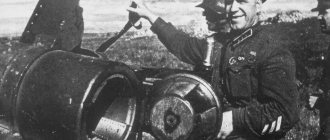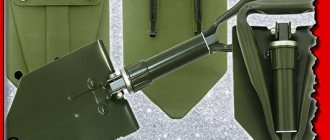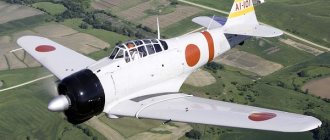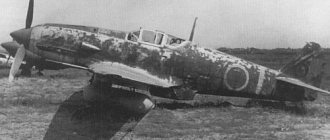The path to the adoption of the monoplane fighter by the Imperial Army aviation was quite tortuous. Back in 1934, it presented the Ki-11 aircraft for competition - a strut-braced monoplane with a fixed landing gear, somewhat reminiscent of the American Boeing P-26. However, the customer chose the more familiar and conservative Kawasaki Ki-10 biplane. No luck with the next monoplane, the Ki-12. This vehicle, equipped with an HS 12Ycrs engine with a cannon motor and equipped with a retractable landing gear, was considered by the military to be too complex for mass use. The Nakajima designers, led by T. Koyama, proactively began developing a simpler fighter under the brand name PE - a cantilever monoplane with a fixed landing gear and a 9-cylinder air-cooled Nakajima Ha-1 Ko engine (650 hp). It was this machine that became the basis for the future Ki-27, which differed from the RE only in details (for example, the pilot’s cabin was made completely enclosed). In June 1935, Nakajima, along with Kawasaki and Mitsubishi, were given orders for each company to build two prototypes of new fighters.
In July 1936, an experimental RE was flown, and already on October 15, the first prototype of the Ki-27 took off. The second vehicle, which entered testing in December 1936, had a wing increased from 16.4 to 17.6 square meters. m of area, which improved maneuverability. In comparative tests, competitors - the Kawasaki Ki-28 and Mitsubishi Ki-33 - showed slightly higher speed and climb rate, but the Ki-27 turned out to be more maneuverable - and it was this quality that Japanese fighter pilots traditionally preferred. As a result, the Nakajima aircraft was adopted for service.
A total of 2,069 Ki-27s were built , incl. 2022 on in Ota (until November 1942) and 50 - . A number of sources mention the release of the Ki-27 in Harbin (Manchuria). But, most likely, there is confusion here with the Ki-79, a two-seat training aircraft created by Maney on the basis of the Ki-27. In the Allied code system, the Ki-27 was designated "Neith", but along with the official code, the nickname "Abdul", which the aircraft received during the fighting in China, was widely used.
Main modifications of the Nakajima Ki-27
Ki -27 - pre-production aircraft, differing from the second prototype by an even larger area and wingspan, an enlarged fin, a redesigned engine cowling and cockpit canopy. Some of the aircraft received the Ha-1 Ko engine, some - the Ha-1 Otsu (710 hp). Armament - 2 7.7-mm synchronized machine guns "type 89" (500 rounds of ammunition per barrel). From June to December 1937, 10 aircraft were built. Ki -27 Ko (in some publications appears as Ki-27a; “army fighter type 97 model Ko”) - Ha-1 Otsu engine. Produced during 1938, about 300 vehicles were built.
Ki -27 Otsu (“type 97 Otsu model”) - the engine and small arms are unchanged, but there is the possibility of suspending 4 25-kg aerial bombs or 2 130-liter PTB under the center section. The glazing area of the canopy has been increased - the Ki-27 Otsu became the world's first production fighter with a teardrop-shaped canopy . The hood has been improved and some other changes have been made.
Ki -27 Kai is a modified lightweight version that appeared in 1940 as a “safety net” in case of problems with the development of the Ki-43. 2 aircraft were built, not mass produced since the Ki-43 was successfully introduced into series.
Ki -27 Kaizo (“Army fighter training type 97”) - Ki-27 converted for use in schools. The plane remained single-seat. The fairings were removed from the wheels and landing gear, and the tail spike was sometimes replaced with a wheel. Some aircraft received equipment for towing targets.
Development
Nakajima independently worked on the design of a low-wing monoplane fighter, which he called the PE
. When the Imperial Japanese Army commissioned Nakajima to develop an aircraft with these characteristics for competitive evaluation in mid-1935, the result of Nakajima's Ki-27 prototype was essentially similar to the EP, but with the inclusion of a number of improvements prompted by the evaluation of the EP itself. During operational testing, two prototypes and ten pre-production samples were used, the latter having the second-largest wing and a fully enclosed cockpit. In this configuration, the model entered production in 1937 as the Army's Fighter Type 97 Model A (Nakajima Ki-27a). Production of the device ended in 1942, with a total of 3,399 units built (2020 - Nakajima and 1,379 - Mansyu). [ 1 ]
Design features of the Ki-49 Donryu bomber
The Ki-49 bomber is an all-metal mid-wing with a straight, trapezoidal wing. The wing mechanization consisted of Fowler flaps and ailerons. The bomb bay was located along the entire length of the center section. The fuel supply was located in 6 protected tanks in the center section and 3 tanks in the consoles.
The landing gear is retractable, tricycle with a tail wheel. The power plant consisted of 2 air-cooled piston star engines Ha-41 (later Ha-109, Ha-117) with three-blade propellers.
Defensive armament included a 20 mm Ho-1 cannon in the upper turret, 5 Ho-103 machine guns in the nose, on the sides, under the fuselage and in the rear turret. It was the Ki-49-I Donryu that was the first Japanese bomber with a partially turret-mounted armament.
The Ki-49 bomber looks surprisingly modern for Japanese aircraft from the Second World War
Operation history
The Ki-27 was used in the Battle of Dzhaldzhin Gol.
This fighter was distinguished by its combat effectiveness and operational reliability. Its first operational deployment was to China in 1938. Its good performance characteristics allowed it to achieve air superiority until the Soviet-made Polikarpov I-16 monoplanes appeared in the Chinese ranks. Ki-27s operated during the invasions of Burma, Malaysia, the Dutch East Indies and the Philippines, earning the nickname "Neit" ("Abdul", while fighting over the skies of China, Burma and India). The aircraft remained in the front rank until the Allies were able to counter it with more advanced fighters, after which they were transferred to the defense of the Japanese islands until 1943, after which they were used as forward trainers and after the war as suicide aircraft. [ 1 ]
Bibliography
- Buechel, Richard M. (1970). Nakajima Ki.27A-B Manshu Ki.79A-B in the Japanese Air Force - Manchukuo - IPSF-RACAF-PLAAF & CAF Service
(English). Reading, Berkshire, Reino Unido: Osprey Publications. ISBN 0-85045-020-9. - Thorpe, Donald W. (1968). World War II Japanese Army Air Force camouflage and markings
(English). Fallbrook, CA: ISBN Aero Publishers Inc. 0-8168-6579-5. - Wieliczko, Leszek A.; Szeremeta, Zygmunt (2004). Nakajima Ki 27 Nate
(English/Polish). Lublin, Polonia: Kagero. ISBN 83-89088-51-7.
- Illustrated Encyclopedia of Aviation.
Volume 10 (2nd edition). Page 2579 . Barcelona: Delta Editorial, SA 1984. ISBN 84-85822-79-X.
See also[edit]
Related development
- Nakajima Ki-11
- Nakajima Ki-12
- Nakajima Ki-43
Aircraft of comparable role, configuration and era
- Arado Ar 80
- Curtiss P-36 Hawk
- Devoytin D.500
- Fokker D. XXI
- Gloucester F.5/34
- Polikarpov I-16
Related Lists
- List of aircraft of Japan during World War II
- List of World War II aircraft
- List of Japanese military aircraft
Operators
During World War II
Two Japanese Nakajima Ki-27 fighters. Japan
- Imperial Japanese Army Air Service. Japanese Ki-27s served in the Dokuritsu Hikō Daitai Regiments
No. 2, 9, 10, 84 and 102;
in Hiko Sentai regiments
No. 1, 2, 4, 5, 9, 11, 13, 18, 21, 24, 26, 29, 30, 33, 48, 50, 54, 59, 63, 64, 68, 70, 77 , 78, 85, 87, 101, 144, 204, 206, 244, 246 and 248; and at the flight and training schools of Rikugun, Tokorozawa, Akeno, Kumagaya and Tachiarai. [ 2 ] [ 3 ] [ 4 ]
Manchukuo
- Manchukuo Air Force
Thailand
- Royal Thai Air Force. [ 5 ] Squadrons No. 15 and 16. [ 6 ] [ 7 ]
Postwar
Indonesia
- In 1945, guerrillas fighting for Indonesian independence captured a small number of aircraft from Japanese air bases. Most of the aircraft were destroyed during military conflicts between the Netherlands and the newly declared Republic of Indonesia during the Indonesian National Revolution of 1945-1949.
People's Republic of China
- Air Force ROC
People's Republic of China
- People's Liberation Army Air Force
Army Air Force fighter Nakajima Ki-84 Hayate
After production of the licensed German Daimler-Benz DB 601A engine (under the designation Kawasaki Na-40) was established in Japan, a design group headed by T. Koyama was formed, which was tasked with developing a project for a fighter equipped with this power plant. It was given the designation Ki-62. Since Kawasaki specialists had more experience in creating aircraft with liquid-cooled engines, and also worked on the Ki-43 and Ki-44 fighters, the Ki-62 project was closed. However, the experience gained during the work on the Ki-62 and Ki-63 aircraft was too valuable, and they decided to use it when, in January 1942, representatives of Koku Hombu began discussing the issue of a successor to the Ki-43 Hayabusa fighter.
It was supposed to be a long-range multi-role fighter capable of outperforming the best Western aircraft. Its maximum speed at an altitude of 5000 m was supposed to reach 640-680 km/h, and its fuel reserve was to provide 90 minutes of combat operation at a distance of 400 km from the base. Although the maneuverability requirements were reduced compared to the Ki-43, they were higher than for the Ki-44 interceptor, since the new aircraft was intended primarily to combat enemy fighters. It was decided to use the new 18-cylinder two-row radial air-cooled Nakajima Na-45 engine as the power plant. It was planned that the armament would consist of two 20-mm No-5 cannons and two 12.7-mm Type 1 machine guns. A mandatory requirement was the presence of armor protection for the pilot and tested fuel tanks.
Since the design of the new Japanese World War II fighter, designated Ki-84, was largely based on the Ki-62 and Ki-bZ, work on the design and construction of prototypes proceeded at a rapid pace. They ended in March 1943, when the first prototype took off. In June, the second prototype also made its first flight. The new aircraft was a low-wing all-metal structure, which was highly technologically advanced and had strength characteristics comparable to American fighters. The prototypes were powered by Nakajima Na-45-11 engines with four-bladed variable pitch propellers. The aircraft were distinguished by the presence of large exhaust manifold pipes on both sides of the hood, a jettisonable ventral fuel tank and protruding barrels of two machine guns mounted above the engine.
Description of the Nakajima Ki-84 Hayate (“Storm”) aircraft
The Japanese World War II fighter Nakajima Ki-84-Ia Hayate (Storm) was a single-seat cantilever monoplane of conventional design.
Fuselage. A duralumin semi-monocoque of oval cross-section with smoothly riveted working skin consisted of three sections. The engine frame and hood, which covered the oil cooler, carburetor and turbocharger air intakes, as well as machine gun barrels, made up the first section. The central section included two fire partitions, between which a 160-liter tank with a water-methanol mixture was mounted, a cockpit with a canopy of 65 mm armored glass and a 13 mm armored head and pilot armored back, a three-section canopy with a sliding central section and a wing center section. The main fuel tank and radio equipment were installed in the rear fuselage section.
Wing. Single-spar all-metal with working duralumin skin, consisted of a center section and outer consoles. The fabric-covered ailerons were attached to the 14th and 24th ribs using self-centering brackets. The aileron rod was attached at its central point. The hydraulically operated Fowler flaps had a maximum extension angle of 35°. The wing provided space for two cannons, two main and two additional fuel tanks in the front, wheel wells and underwing holders mounted outside the cannons.
Tail. The steering wheel, like other control planes, had a metal frame with fabric covering. The horizontal stabilizer was located far ahead of the fin.
Chassis. Fully retractable, conventional type with hydraulic drive. The main pillars were retracted inward and horizontally into the wings, where they were completely covered by smooth-fitting doors. Hydraulic brakes. The uncontrollable tail wheel was retracted into the fuselage and was also completely covered with flaps.
Engine: 18-cylinder military Type 4 Model 11 or 12 (Nakajima Ha-45-11 or Ha-45-12), developing 1800 hp at 2900 rpm on takeoff, 1650 hp at 2000 m and 1460 hp at 5700 m. Four-blade constant speed propeller with electrical control, diameter 3050 or 3100 mm.
Fuel system. According to Japanese documents, the maximum internal reserve in one fuselage and four wing tanks was 737 liters. However, American flight test reports give the following figures: rear fuselage tank 218 liters, two main wing tanks (in the left and right wing) 174 liters each and two wing tanks in the front of the consoles 67 liters each; total supply 700 l. 200 liters of drop tanks could be suspended under the wings.
The aircraft's armament is 2 x 12.7 mm synchronized Ho-103 machine guns (350 rounds per barrel) in the upper front part of the fuselage and 2 x 0 mm Ho-5 cannons (150 rounds per barrel) in the wings outside the landing gear. Underwing holders for two bombs with a caliber of up to 250 kg.
Japanese army fighter Nakajima Ki-84-1ko Hayate side view
Flight tests of the two prototypes were carried out quite quickly and successfully; “childhood illnesses” so characteristic of new types of complex equipment were practically never encountered. For more detailed operational tests, a pilot batch of 83 vehicles was ordered, which were produced at the Ota plant between August 1943 and March 1944 and differed from each other in minor details. Military pilots, who already appreciated how important speed and high survivability are for a fighter, received the aircraft well, even despite the fact that its maximum speed of 624 km/h was lower than required, and it reached an altitude of 5000 m in 6.25 minutes. Pilots criticized the Ki-84 only for too much force on the elevators at high speeds and for some “softness” of the rudder at low speeds. In general, the new aircraft was superior not only to the Japanese fighters in service. but also all prototypes that were ready at that time for launch into mass production.
Japanese army fighter Nakajima Ki-84-1ko Hayate top view
Based on the test results, the Japanese Ki-84 fighter was adopted by the Imperial Japanese Army Air Force under the official designation “Army Fighter Type 4 Model 1A Hayate (Storm)” (Ki-84-Ia). received the task to urgently begin mass production of the aircraft at its factories in the cities of Ota and Utsona. In addition, it was planned to release it in Harbin at .
Japanese army fighter Nakajima Ki-84-1ko Hayate bottom view
But first, the military ordered Nakajima to produce a pre-production batch of 42 vehicles. They were built in March-June 1944, virtually simultaneously with the first production vehicles, which began rolling off assembly lines in April 1944. Production aircraft and pre-production aircraft differed from their predecessors in the exhaust gas removal system with individual exhaust pipes, which made it possible to increase the maximum speed by 14.5-16 km/h, and the use of two jettisonable underwing fuel tanks instead of one ventral one.
Ki-84 modifications
Despite the very high characteristics of the Ki-84 army fighter, specialists almost immediately began improving the machine. Moreover, the work was aimed not only and not so much at improving the combat qualities of the Hayate, but at increasing the manufacturability of the design, which would allow increasing production volumes, and reducing the proportion of strategic materials, the shortage of which was felt more and more acutely in Japan with each passing month. As a result, the following modifications and options were created.
- Ki-84-I is the first production modification, launched into production in April 1944. Aircraft were built in two places (in the cities of Ota and Utsonamiya) and (in Harbin, Manchuria). In December 1944, despite a shortage of skilled workers, raw materials and supplies, Hayate production peaked at 373 fighters. Initially, the Ki-84-I production vehicles were equipped with the Nakajima Na-45-11 engine with a power of 1800 hp, but it was soon replaced by the 1825-horsepower version of the Na-45-12, which then gave way to the Na-45-21 engine with a power of 1990 hp Depending on the armament, the Ki-84-Ia, Ki-84-Ib and Ki-84-Ic variants are distinguished. The aircraft of the first version were armed with two 12.7 mm Type 1 machine guns located above the engine and two wing-mounted 20 mm Ho-5 cannons; on the Ki-84-16b the machine guns were replaced by two Ho-5 cannons. The Ki-84-Ic vehicles (a small number were produced) were armed with two 20-mm synchronized No-5 cannons and two wing-mounted 30-mm No-105 cannons.
- Ki-84-II (Ki-84 KAI) - a modification built in relatively small numbers with a wooden rear fuselage and new wingtips, which were manufactured at the Tanuma plant. Most aircraft were equipped with 1990-horsepower Na-45-21 engines, but some received an improved Na-45-25 of the same power. Late production aircraft were equipped with Na-45-23 engines with direct injection with a power of 2000 hp. The maximum speed increased to 670 km/h. In the army, fighters of this modification were still designated Ki-84-Ib and Ki-84-Ic, depending on the armament.
- Ki-84-III - this designation was given to the high-altitude version of the Hayate. It was planned to equip the new fighter with a Nakajima Ha-45Ru engine with a turbocharger, but work on this project was not completed until the end of the war.
- Ki-84N and Ki-84P are high-altitude interceptor variants with an 18-cylinder twin-row Nakajima Na-44-13 engine producing 2,500 hp. and a wing with an increased area (22.52 m2 for the Ki-84N and 24.51 m2 for the Ki-84). By the time of Japan's surrender, the aircraft were at the design stage, but mass production of the Ki-84N under the designation Ki-117 was already planned.
- Ki-84R - a variant with a standard Ki-84-I airframe, modified for installation of a Nakajima Na-45-44 engine with a power of 2000 hp. with a mechanical drive of a two-stage three-speed turbocharger. By the time of surrender, the prototype was 80% complete.
- Ki-106 - a variant designed on It was an all-wood copy of the Ki-84 with a Na-45-21 engine. Three prototypes were built in 1945, but only two were flown before the end of the war. The first of the experimental aircraft was armed with four 20-mm No-5 cannons, but to reduce the weight, which increased by 272 kg, only two guns were installed on the second and third copies. Until the last days of the war, work was underway on the Tachikawa to further lighten the design - this was the requirement of Koku Hombu before launching the Ki-106 into production.
- The Ki-113 was a variant designed in the autumn of 1944 in which the cabin section, stringers and ribs were made of carbon steel, and the skin was made of ordinary sheet metal. The prototype, equipped with a Na-45-21 engine and armed with four 20-mm cannons, was assembled in early 1945, but never took off due to its obvious overweight.
- Ki-116 is a variant developed by specialists. The only prototype produced had an orKi-84-Ia airframe and a Mntsubisi Na-33-62 engine with 1,500 hp. s., which rotated a three-blade propeller from the Ki-46-III. The aircraft turned out to be successful, the weight of the empty aircraft decreased by 454 kg, and maneuverability increased. On the eve of Japan's surrender, the Ki-116 underwent intensive flight testing.
A total of 3,288 Ki-84 fighters were produced from April 1944 to August 1945, with a further 95 aircraft built. Quite a large number, especially considering that at that time the Japanese islands were subjected to massive raids by American B-29 bombers, and the shortage of raw materials, materials and skilled labor became simply catastrophic.
The Hayate's combat debut, which took place in China in March 1944, turned out to be successful. The Curtiss P-40 fighters opposing them, manned by Chinese and American pilots, were significantly inferior to the Ki-84 and suffered heavy losses. Later in the Philippines and in the skies over Japan, Hayate had to face a more formidable enemy. But also in battles with such excellent American fighters as the Lockheed P-38J/L Republic P-47D and the North American P-5 ID. The Ki-84 performed very well, rightfully earning not only the love of Japanese pilots and the respect of the enemy, but also the title of the best Japanese fighter of the Second World War. Code designation "Frank".
| Model | Nakajima Ki-84 |
| Crew, man | 1 |
| Wingspan, m | 11,24 |
| Length, m | 9,92 |
| Height, m | 3,38 |
| Wing area, m2 | 21,0 |
| Power point | Nakajima (Ha-45-21) Army Type 4 Model 21 |
| Power, hp | 2000 |
| Empty weight, kg | 2660 |
| Normal take-off, kg | 3716 |
| Maximum take-off, kg | 4171 |
| Max. ground speed, km/h | 523 |
| Max. speed at an altitude of 3000m, km/h | 582 |
| Climb time 5000m, min | 6,42 |
| Practical ceiling, m | 11000 |
| Flight range with full refueling, km | 1650 |
| Armament, machine guns, mm | 2x13 Ho-103 |
| Armament, guns, mm | 2x20 Ho-5 |
| Armament, bombs, kg | 2×250 |
Sources:
- O. V. Doroshkevich. Japanese planes of World War II.
- Kotelnikov V. Grozny “Hayate”.
- Bunrin Do - Famous Airplanes of the world 19 - Army Type 4 Fighter (Nakajima Ki-84 (Frank))
- Aircraft Profile 70. Rene J. Francillon. Nakajima Ki-84 Hayate.
- Andrey Firsov. Aviation of Japan.
| < Back | Next > |
References
- ↑ a b
Illustrated Encyclopedia of Aviation. Volume 10. Page 2579 - Bueschel, 1970, pp. 48–50.
- ↑ a b
Velichko and Sheremeta, 2004, p. 99 - Thorpe, 1968, pp. 1881–185
- "Japanese aircraft in service with the Royal Thai Air Force and Royal Thai Navy during World War II." via aeroflight.co.
Access date: July 22, 2010. - Wieliczko in Szeremeta, 2004, p. 81
- Wieliczko in Szeremeta, 2004, p. 79
Specifications (Ki-27b)
Reference data
: Wieliczko y Szeremeta. [3]
General characteristics
- Crew:
1 (pilot) - Length:
7,53 - Wingspan:
11.31 m - Height:
3.28 m - Wing area:
18.56 m². - Empty weight:
1110 - Curb weight:
1547 kg - Maximum take-off weight:
1790 kg - Powerplant:
1 × Nakajima Ha-1
Otsu
, air-cooled, 9-cylinder, radial.
Potencia:
485 kW (650; 659)
1 × two-bladed per engine.
Performance
- Maximum operating speed (V no):
470 km/h (292 mph; 254 kn) - Cruise speed (Vc):
350 km/h (217 mph; 189 kn) - Alkans:
627 (339 mi; 390 mi) - Service ceiling :
12,250 (40,190 ft) - Ascent speed:
15.3 m/s (3,012 ft/min) - Wing load :
83.35 kg/m² - Power / weight:
0.30 kW / kg
Armament
- Machine guns:
2 x Type 89 7.70 mm belts with 500 cartridges each (or one 12.7 mm and one 7.70 mm in later models)
100 kg pumps






